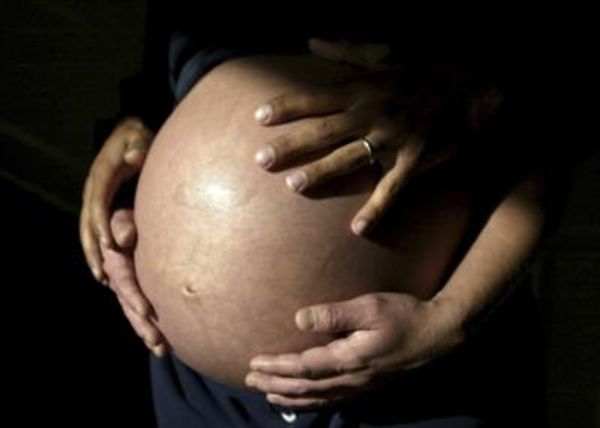Dr Sarah McNab has spent a good chunk of the past month calmly explaining the best way to administer rapid antigen tests to children.
On Sunday night, as the Director of General Medicine at Melbourne's Royal Children's Hospital prepared her own three kids to start the school year, she set about following her own advice.
With no symptoms, her six-, eight- and 11-year-old were each one negative RAT result away from a long-anticipated return to primary school.
"We thought we'd do it the night before school because mornings in our place are pretty chaotic," Dr McNab said.
"They were really excited about getting back to school, so that actually helped with administering the test."
After 15 minutes, the family peered over the completed tests. All three were positive for COVID-19.
"I think they were surprised. They are all nerdy like their mum — they wanted to go back to school.
So far, symptoms in the house have been relatively mild — aside from Dr McNab's eight-year-old experiencing a fever and tummy problems.
The family nonetheless faces their first week back at school being spent at home on the couch
For Dr McNab, the experience only underscores the importance of widely-available RAT tests for school children and families — and the need to use them correctly.
Before the test
With millions of RATs being distributed to schools and families, multiple weekly tests will quickly become an unfortunate part of many family routines.
During the early school year phase where testing is still something of a novelty, Dr McNab said children deserved an honest conversation about what to expect.
"It is hard to sugar coat it. Giving children some sense of control is important, and not lying to them," she said.
"I would say 'this might be uncomfortable, but it we'll get it done quickly and then it will be over.'"
Getting started
Not all RATs are the same and each test may vary slightly, so it is important to read the packaging and follow instructions closely.
Wash your hands prior to opening the test. Once it is removed from the packaging, the test should be conducted straight away.
For a nasal swab test, you should be provided with a swab packet, a sealed liquid solution tube with a separate cap, as well as a rectangular testing device.
Stand the liquid tube in the packet's tube holder prior to removing its foil lid.
Have the child blow their nose into a tissue and wipe their nose clean, before discarding the tissue.
'Low and slow'
Once the foil lid is removed from the liquid solution tube, it is time to conduct the test.
Footage early in the pandemic of people receiving eye-watering PCR tests has given some the impression that RATs need to be inserted high into the nostril.
In a series of viral explainer videos, Melbourne-based ear, nose and throat surgeon Dr Eric Levi instead stresses one simple guiding principle when administering RATs: low and slow.
Rather than pointing the nasal swab high into the child's nose, direct the swab in a horizontal direction and carefully insert it into the nose along the bottom of the nasal passage.
Slowly rotate the swab from side to side about one to two centimetres inside the child's nose for around 15 seconds. Repeat the process with the swab inside the other nostril.
The process may feel slightly uncomfortable, but should not be painful.
Once the swab has been removed, it should be placed immediately into the liquid solution. Pinch the sides of the plastic tube and rotate the swab around 10 times so the solution mixes properly with what has been collected on the swab.
Throw out the swab and apply the small plastic cap to the liquid tube. Turn it upside and squeeze out four drops of the solution onto the well of the testing device. It should be clearly indicated on the packet where the solution needs to be dropped onto.
Discard the nasal swab and solution, wash your hands and wait 15 minutes before checking the testing device.
The device will have two letters in the result window: C for control and T for Test.
A line should appear against the C, which indicates that the test has reacted to the liquid. If there is no line against the letter C, the test has not worked and a new test will need to be conducted.
A line against the letter T indicates a positive COVID-19 result.
If there is no line against the T and your child does not have symptoms, they are all set to go to school.
What to do if your child tests positive?
Just as administering RATs will become more routine, so too will children testing COVID-19 positive.
Dr McNab stresses it is important not to panic.
"We know that for most children, they're going to have either no symptoms or mild symptoms. It is a very small number of children who need to come to hospital for medical care."
University of Sydney Infectious diseases epidemiologist Associate Professor Meru Sheel said parents might observe flu-like symptoms, but the likelihood of anything greater or more prolonged is "very, very small."
Nonetheless, Dr McNab said it was natural for parents to worry if their child was unwell.
"It is one thing to hear statistics or hear reassurance about this condition normally being not overly concerning in children, but when it is your child who has a fever, or it's your child who's tested positive, it makes sense that you'll be concerned.
"I have already discovered that myself today at the first sign of symptoms, wondering whether it is going worse than expected or not," the paediatrician said.
"In general, children who do have symptoms, like a fever, you can manage if they're uncomfortable with some paracetamol or ibuprofen.
"I would recommend reaching out to your GP. A lot of GPs are able to telehealth with families and provide some reassurance and advice. Nurse on call is also a really good resource to just discuss your child's symptoms and whether or not you should be taking them to seek more medical attention."
Most schools will have communicated the process of how to notify a child's positive test result and what to do next, but Dr McNab recommends registering the positive RAT online with your local department of health.
"In Victoria, you pretty quickly get a text message from the Department of Health with lots of information, that includes links to the Royal Children's Hospital fact sheets and numbers to call if you're worried about your child."
Amid the chaos of the current Omicron wave, Dr McNab hopes children can be centred as much as possible throughout yet another disrupted school year.
"I think kids have sacrificed so much, so trying to increase some sort of normality and keeping children at the centre this year is, as a paediatrician, what I want," she said.
"I'm hopeful that we can achieve it this year."







